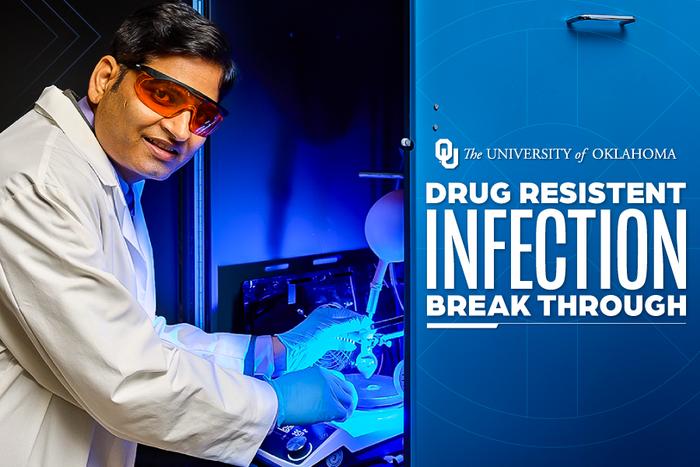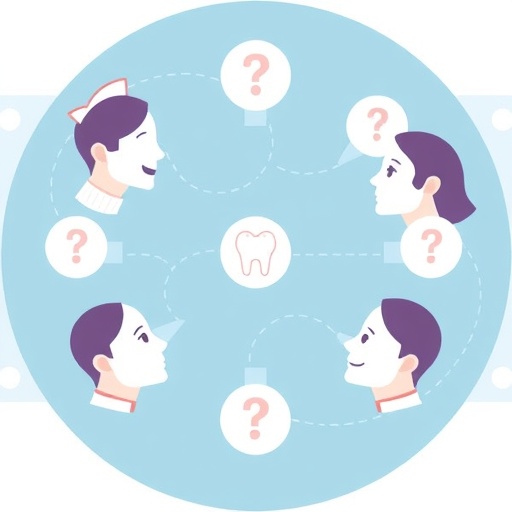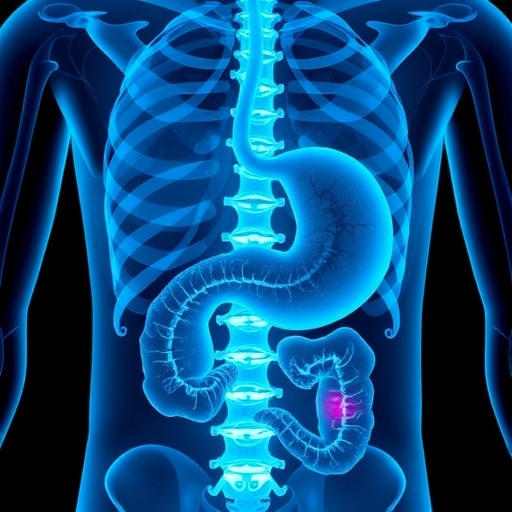In a groundbreaking advancement that could redefine the approach to combating antibiotic-resistant infections and certain cancers, researchers at the University of Oklahoma have unveiled a novel method for synthesizing critical carbohydrate molecules. This pioneering technique replaces traditionally used precious metals with environmentally friendly and cost-effective alternatives such as blue light and iron. The implications for pharmaceutical manufacturing and medical treatment are far-reaching, as these synthetic carbohydrates play a foundational role in the efficacy of numerous antibiotics targeting stubborn gram-negative pathogens.
For decades, precious metals like platinum and rhodium have been indispensable in the synthesis processes of carbohydrate-based antibiotics. These metals facilitate complex chemical reactions, permitting the assembly of synthetic sugars necessary for the penetration and action against tenacious pathogens, including notorious culprits like Pseudomonas aeruginosa. This bacterium, prevalent in hospital settings, poses a significant threat to immunocompromised patients by resisting multiple drugs available today. However, the reliance on these metals carries significant downsides, including environmentally damaging mining practices, high production costs, and the requirement for harsh catalytic conditions that limit scalability and sustainability.
The recent publication in Nature Communications authored by an OU team led by Professor Indrajeet Sharma eye-opening overturns this paradigm by introducing a method that harnesses either blue light or iron to catalytically drive the synthesis of diazo-thioglycosides—crucial carbohydrate building blocks—without the need for traditional precious metals. By employing visible blue light as an energy source or cost-effective iron salts such as iron (III) triflate (Fe(OTf)3), these researchers achieve iterative and stereoselective glycosylations with remarkable sensitivity and selectivity. This method not only lowers the toxicological footprint of the process but also reduces operational complexities and manufacturing costs, making it highly attractive for pharmaceutical development pipelines.
The underlying chemistry capitalizes on the activation of diazo groups under blue light irradiation or iron catalysis, which facilitates the transfer of thioglycoside donors to target molecules. Unlike earlier approaches that require stringent conditions and expensive catalysts, this light-activated and iron-mediated process operates under mild and metal-sparing environments. The stereochemical control is preserved, ensuring that the resulting carbohydrate structures maintain the precise spatial orientation necessary for biological activity. This is crucial because even minute changes in carbohydrate stereochemistry can lead to profound differences in how antibiotics or pro-drugs interact with bacterial cell walls or human enzymes.
The significance of this approach extends beyond just synthetic convenience. Many antibiotics rely on carbohydrate moieties to traverse the formidable outer membrane of gram-negative bacteria—layers that traditionally obstruct drug entry, rendering several candidates ineffective. By innovating a cleaner, cheaper synthesis route, Sharma’s team potentially opens the door for designing next-generation antibiotics that use carbohydrates as molecular “keys” to breach these bacterial defenses. Such strategies could revive otherwise dormant drug candidates, enhancing their potency and broadening the scope of treatable infections amidst the accelerating global crisis of antimicrobial resistance.
A particularly fascinating facet of this research lies in its application to pro-drug development. Pro-drugs are therapeutics administered in inactive or less active forms that undergo metabolic conversion within the body to release the active compound. Carbohydrates often serve as solubility enhancers, improving a drug’s bioavailability. The OU team is investigating the attachment of specially engineered sugars, including thiosugars—sugar analogs where oxygen atoms are replaced by sulfur—using their blue light-based synthetic method. This chemical modification imparts resistance to enzymatic degradation, potentially allowing these molecules to persist longer in physiological environments and exert sustained therapeutic effects against challenging infections and even cancer.
The innovative use of blue light to drive these reactions, pioneered by lead researcher Surya Pratap Singh under Professor Sharma’s supervision, eliminates dependency on heavy metals that have plagued pharmaceutical synthesis for decades. Blue light, with wavelengths in the visible spectrum, provides a gentle yet effective energy source to activate chemical intermediates selectively without undesirable side reactions or toxicity. This metal-free activation represents a significant leap toward green chemistry principles within medicinal chemistry, reducing hazardous waste and supporting safer pharmaceutical manufacturing protocols.
Collaborations within the University of Oklahoma have further strengthened the translational potential of this work. Partnering with Professor Helen Zgurskaya, whose expertise lies in multidrug resistance mechanisms in Pseudomonas aeruginosa, the team is exploring whether their carbohydrate modifications can enhance the permeability and effectiveness of compounds developed in her lab. Many promising candidates have traditionally failed due to their inability to penetrate the bacterium’s formidable outer lipid membrane; attaching these newly synthesized carbohydrate moieties may unlock their therapeutic potential, reversing drug resistance trends.
Beyond antibiotics, the enhanced stability and effectiveness of modified carbohydrate drugs may transform cancer treatment modalities. By prolonging drug half-lives and improving solubility, these sugar conjugates can optimize dosing regimens and minimize side effects. The inherent finesse of their synthetic strategy enables precise control over molecular architecture, a critical aspect of designing potent yet safe therapeutic agents.
This research, funded by the National Science Foundation and published in Nature Communications, demonstrates an elegant convergence of synthetic organic chemistry, photochemistry, and biomedical science. The team’s work ushers in a new era where simple, environmentally benign techniques can replace costly, toxic processes, heralding profound shifts in antibiotic and cancer drug design. By leveraging inherently abundant resources like light and iron, this innovation aligns with global sustainability goals and medical imperatives alike, potentially impacting millions of lives.
For readers interested in further details or related research, Professor Indrajeet Sharma’s laboratory website provides extensive resources and publications that delve into advanced drug discovery techniques, including this transformative blue-light-activated glycosylation method. As antibiotic resistance continues to threaten modern medicine, such creative and pragmatic solutions may prove critical in averting a post-antibiotic era.
Subject of Research: Not applicable
Article Title: Fe(OTf)3 or Photosensitizer-free blue lightactivated diazo-thioglycoside donors for Iterative and stereoselective glycosylations
News Publication Date: 21-Apr-2025
Web References:
https://indrajeetsharma.com/
https://ou.edu/news/articles/2025/january/how-a-single-nitrogen-atom-could-transform-the-future-of-drug-discovery
https://www.nature.com/articles/s41467-025-56445-1
References:
Sharma, I., Singh, S.P., Chaudhary, U., Daróczi, A., & Zgurskaya, H. (2025). Fe(OTf)3 or Photosensitizer-Free Blue Light Activated Diazo-Thioglycoside Donors for Iterative and Stereoselective Glycosylations. Nature Communications, DOI: 10.1038/s41467-025-56445-1.
Image Credits: Travis Caperton
Keywords:
Antibiotic resistance, Discovery research, Drug research, Drug resistance, Drug development, Carbohydrates, Cancer treatments
Tags: antibiotic-resistant infectionsblue light technologycarbohydrate synthesis methodscost-effective antibiotic productiondrug-resistant bacteria treatmentenvironmentally friendly pharmaceuticalsinnovative cancer therapiesNature Communications publicationnovel synthetic carbohydratesPseudomonas aeruginosa challengessustainable drug manufacturingUniversity of Oklahoma research





